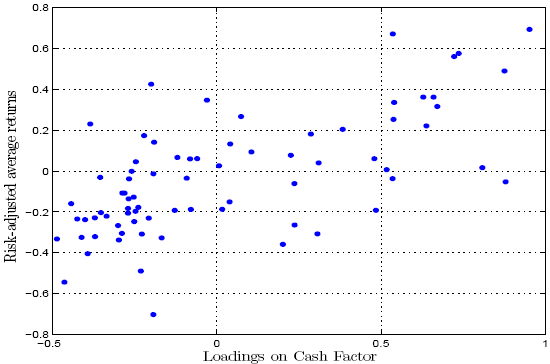Does the percentage of assets held in cash by a company, as an indicator of operating and investment flexibility, predict stock returns? In his January 2009 paper entitled “Firm’s Cash Holdings and the Cross-Section of Equity Returns”, Dino Palazzo measures and interprets the significance of relative cash holdings for future stock returns. Using stock return and firm fundamentals data spanning July 1967 through June 2007, he concludes that:
- A hedge strategy that is long (short) stocks of firms with high (low) cash-to-assets ratios generates an average monthly return of 0.42%, before trading frictions. In other words, relative cash holdings may carry a positive premium for investors.
- The three Fama-French factors (market, size and book-to-market) do not explain this difference in average returns.
- Firms that are sensitive to economic shocks tend to use cash holdings as a hedge against future cash flow shortfall, and this conservative management approach pays off.
The following chart, taken from the paper, plots the risk-adjusted returns of 75 portfolios sorted on size, book-to-market and relative cash holdings (cash-to-assets ratio). The relative cash factor carries a positive and significant risk premium of 0.37% per month separate from the size effect and value premium.

In summary, stocks of companies with relatively high (low) cash-to-asset ratios tend to outperform (underperform).